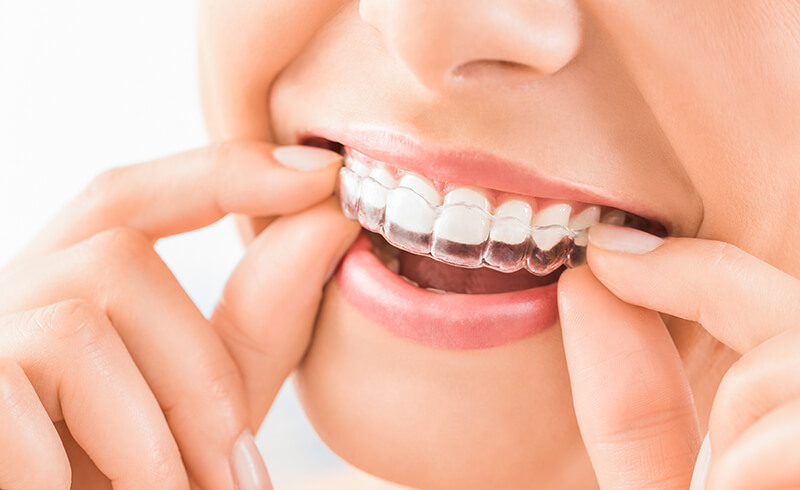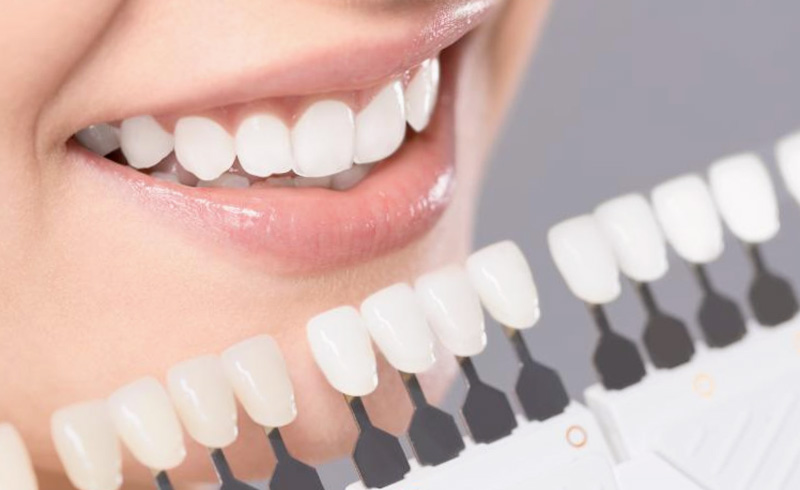INVISALIGN
Who wouldn’t want a beautiful smile? Splendid teeth and a good smile are essential criteria to feeling good. We are all ready for some help from the dentist to get that perfect smile. One of the best alternatives is Invisalign.
Invisalign is portable, transparent, almost invisible and made to order according to your tooth shape. The Invisalign lining is kept about 22 hours a day, changed every 3 weeks and their number depends on the anomaly of the teeth. Invisalign is suggested for light problems of improper teeth.
Slightly, your teeth move to the place where they should be, creating a perfect smile.
In addition to invisibility and comfort there are many other reasons to choose Invisalign. Here are some of the reasons:
If you have questions about Invisalign, we would like to respond to all the uncertainties that may have arisen. Please contact us to see if Invisalign is needed for your teeth. Our team will walk through the Aesthetic Dentistry.

Aesthetic dentistry
Nowadays aesthetics is of particular importance, and having the face, and in particular the mouth, play an important role, the need for the development of aesthetic dentistry has arisen.
People love beauty, when in someone’s smile there is a problem, then with specific techniques, super-aesthetic materials and surgical interventions, a perfect smile is realized. Below we are explaining some of the materials and techniques used

Aesthetic Gingival Operations:
This intervention consists in removing a portion of the bone and gums that surround the teeth. After this intervention, it takes a period of six weeks to recover the gingiva and then can continue with the prosthetic work. This intervention is done in these cases:
- Gummy Smile; are the cases when the person at the time you smile or laugh looks like many gingiva (gums). In these cases the gingival level rises above and then the teeth are worn with china (Laminate) or china.
- In cases of gingivitis on Thursday due to the use of various medicines or gum disease and covering a portion of the teeth.
- In cases when we have disengagement at the length of the first teeth. By interfering with the gingiva part we can make the teeth of the same length.
- In cases where tooth length is insufficient to carry out work on it, crown lengthening is done.

Tooth whitening
Why do teeth change color?
The causes of tooth replacement are numerous, such as: various medications, tooth trauma (breakage, stroke, etc.), toothache removal.
The use of antibiotics like tetracycline from the mother during pregnancy or by the child affects the color of the baby's teeth; in some cases special foods or drinks such as chocolates, coffee, foods that have coloring ingredients affect the tooth color.
How does whitening occur?
The substances used for bleaching are: Carbamide Peroxide and Hydrogen Peroxide (oxygenated water). These two subjects have the ability to pass freely through the tooth layers (dentin, dentin) and spread to all parts of the tooth. These Peroxides (Carbamide and Hydrogen Peroxide) dissolve in oxygen radicals, which enter between the prism prisms (the outer layer of the tooth), by dispersing the scattered molecules that affect the tooth coloring.
Bleeding does not affect the structure of the tooth. Simply the inner tooth color becomes lighter (white).
Whitening agents are cracked into smaller molecules and move in all directions within the tooth. Even if the whole tooth is not covered with bleach, it is all whitened.
Numerous scientific studies have proven the efficacy of peroxides in tooth whitening.
Zinc and dentine (two tooth layers), existing fillings and porcelain are not affected, affected or damaged by bleach agents.
Does whitening affect the bond between filling and tooth?
Although whitening agents emit large amounts of oxygen in the teeth, the joints of existing fillings with the teeth are not affected, but if white fillings are to be made after whitening , then 7-10 days should be expected as the high amount of oxygen in the teeth negatively affects the bond of filling with tooth (for new fillings to be made).
How long does the whitening effect last?
The whitening results are stable. However, depending on the nutrition and lifestyle habits, periodic whitening may be required every two years.
To keep the whitening effect unchanged, regular use of the whitening paste recommended by your doctor is recommended.
Does whitening cause sensitivity?
Tooth sensitivity is a temporary whitening side effect. It leaves after the end of whitening. Recent whitening products include Potassium Nitrate, which eliminates the sensitivity to cold and heat.
Scientific research has shown that Potassium Nitrate penetrates into the dagger, dentate to the nerve, acting as a painkillers (analgesic and anesthetic).
The whitening products include Fluor, an element that reduces tooth sensitivity and protects it from decay.
Does whitening cause problems, damaging or weakening the toothpick (outer layer)?
According to scientific research, also accepted by the American Association of Dental Research, the bleach products that contain the Potassium and Fluoride Nitrates reduce the sensitivity of the tooth to the hottest and the cold, positively affect the health of the total toothache, have anti-carious effect (anti-break) and increase micro-fatigue.
Important: Bleeding should only be done under the supervision of the dentist.
Pregnant women and mothers who breastfeed the baby are not allowed to whiten their teeth.
Tooth whitening nowadays is efficient and safe, if done properly and with the right material. This includes initial diagnosis, scrubbing and stinging, dentist's explanation of the whitening process, and follow-up during the whitening process.
The whitening done by the person with cosmetic - aesthetic products can damage the gums and is not very effective.
How many ways of whitening are there?
Whitening is done in the following ways:
- Office Bleaching: It is performed in the clinic and it takes about 30 minutes and several sessions can take place until the patient's color reaches. The active substance is in high percentage (38% -35% Hydrogen Peroxide).
- Home Bleaching: Measures the mouth and prepares a silicone sheath, filled with whitening agents and held in the mouth during the day or night. The retention time varies from 45 min to all night depending on the percentage of active substance that bleach (10% -15% -20% -22% Carbamide Peroxide).
- Non- Vital Bleaching: Whitening that is done only to the teeth that have been removed from the nerves and have changed color. In this case the tooth filling is removed, the tooth is placed inside the tooth and left to act for 3-5 days. This can be repeated several times until the tooth is discolored. Subsequently, temporary saturation occurs and it is expected 10-15 days to stabilize the oxygen level in the tooth and then become the final filling.
Our Partners






